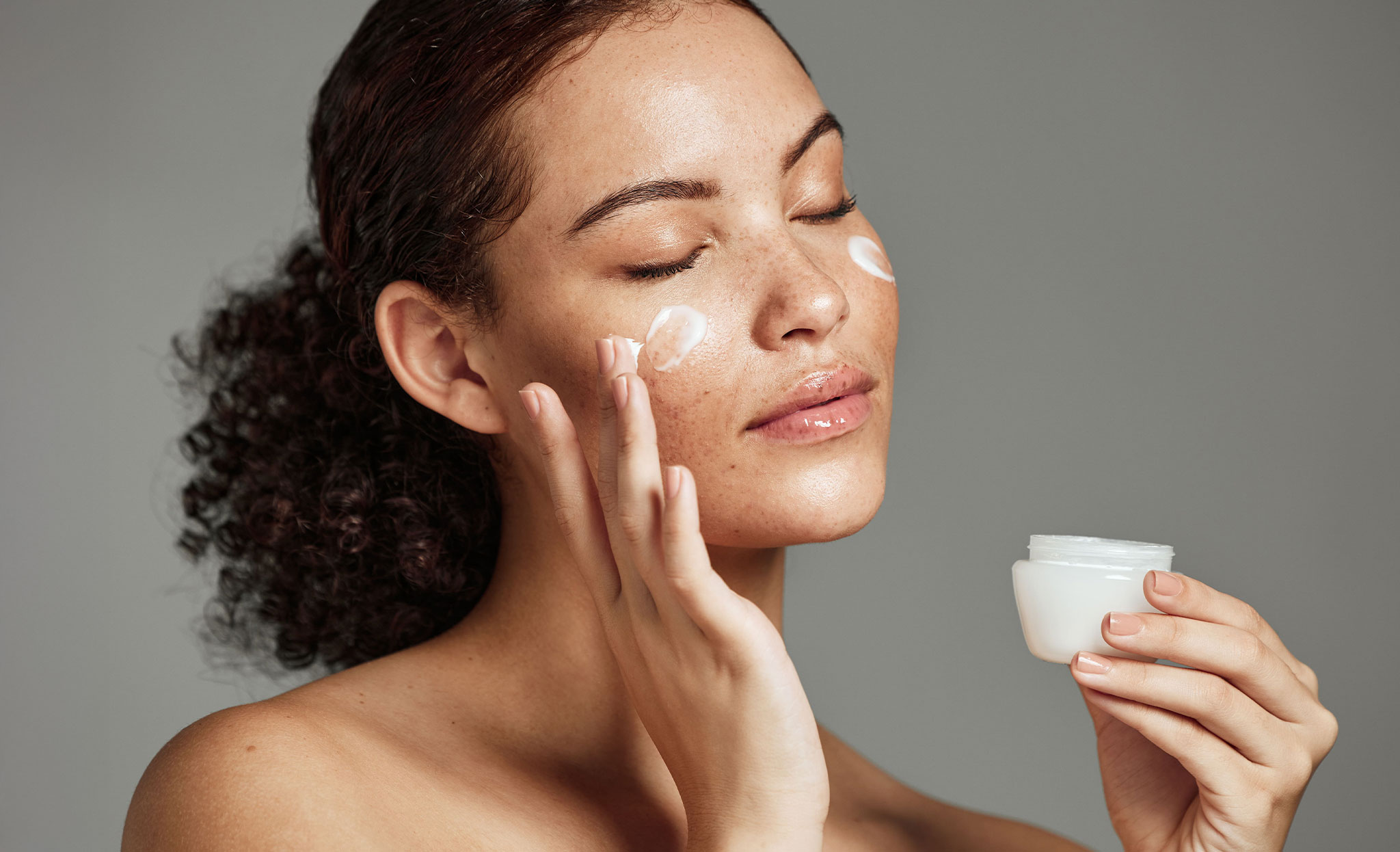
Multifunctional Ingredients
Skin care
peer-reviewed
The unique multifunctionality of polyglyceryl esters:
The science, sustainability, and strategy fuelling next-gen formulations
CHARLOTTE GRONAN
Product manager at Stephenson
ABSTRACT: Multifunctional beauty products are evolving, with polyglyceryl esters emerging as key ingredients due to their versatility, sustainability, and performance. Derived from renewable plant-based sources, these mild, biodegradable compounds function as emulsifiers, emollients, solubilisers, and surfactants, enabling simplified, efficient formulations. Their amphiphilic structure supports stable emulsions, improved aesthetics, and cold processing while reducing ingredient load and energy consumption. In 2024, the global market for polyglyceryl esters reached US$0,69bn and is projected to more than double by 2034, reflecting their growing relevance. As consumers seek clean-label, skin-friendly products, polyglyceryl esters offer brands a pathway to innovate and streamline production that aligns with green chemistry principles.
??????????????????
“
“A study in healthy women providing probiotic yogurt for four weeks showed an improvement in emotional responses as measured by brain scans”
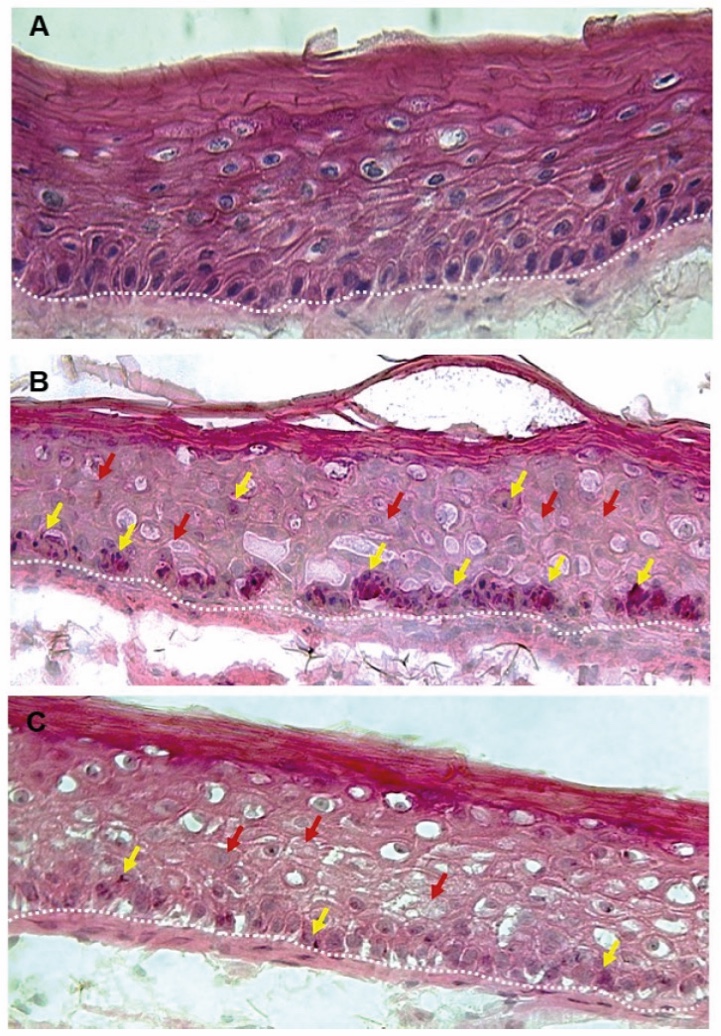
Figure 1. Skin Section with Microbiome. Most microorganisms live in the superficial layers of the stratum corneum and in the upper parts of the hair follicles. Some reside in the deeper areas of the hair follicles and are beyond the reach of ordinary disinfection procedures. There bacteria are a reservoir for recolonization after the surface bacteria are removed.
Materials and methods
Studies of major depressive disorder have been correlated with reduced Lactobacillus and Bifidobacteria and symptom severity has been correlated to changes in Firmicutes, Actinobacteria, and Bacteriodes. Gut microbiota that contain more butyrate producers have been correlated with improved quality of life (1).
A study in healthy women providing probiotic yogurt for four weeks showed an improvement in emotional responses as measured by brain scans (2). A subsequent study by Mohammadi et al. (3) investigated the impacts of probiotic yogurt and probiotic capsules over 6 weeks and found a significant improvement in depression-anxiety-stress scores in subjects taking the specific strains of probiotics contained in the yogurt or capsules. Other studies with probiotics have indicated improvements in depression scores, anxiety, postpartum depression and mood rating in an elderly population (4-7).
Other studies have indicated a benefit of probiotic supplementation in alleviating symptoms of stress. In particular, researchers have looked at stress in students as they prepared for exams, while also evaluating other health indicators such as flu and cold symptoms (1). In healthy people, there is an indication that probiotic supplementation may help to maintain memory function under conditions of acute stress.
While multifunctional beauty and personal care products are not a new concept, the term has evolved to encompass the incorporation of multifunctional ingredients, such as polyglyceryl esters, into a wide range of product applications.
These powerful ingredients enable brands and manufacturers to develop multiple products using one ingredient. This is an appealing prospect when it comes to simplifying procurement, keeping less stock on site, and rationalising the production process.
When considering a multifunctional ingredient in a new beauty or skincare product formulation, whether a micellar water, cleanser, or serum, brands and formulators remain under pressure to balance ingredient functionality, sustainability, and efficiency. And although multifunctional ingredients have come a long way in terms of their application possibilities, some challenges remain. In particular, formulators often struggle to ensure product stability while meeting regulatory standards and consumer expectations, all while keeping the high performance of a product in mind. (1)
In this space, the multifunctional capability of polyglyceryl esters, derived from natural plant-based oil sources, is emerging as an indispensable component in new product formulations.
These mild, biodegradable ingredients offer three unique attributes, acting as either an emulsifier, emollient, solubiliser, or surfactant – offering a cost-effective alternative to traditional petrochemical-based ingredients. Critically, polyglyceryl esters will enable a brand to align with growing requirements for sustainable and skin-friendly formulations while still offering high-impact performance. (2)
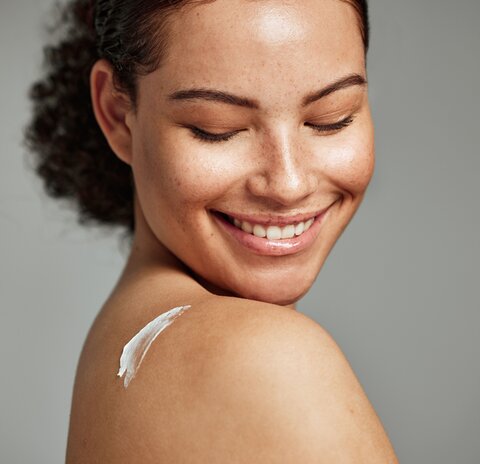
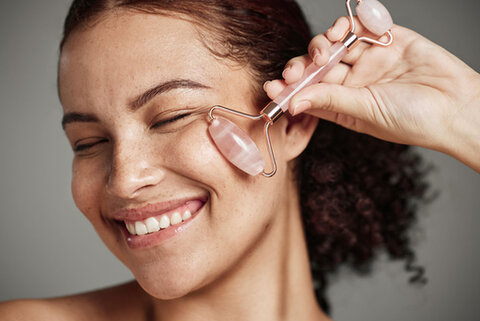
A growing market for polyglyceryl esters
In 2024, the global polyglyceryl esters market was valued at approximately US$0.69 billion and is on track to double, reaching US$1.54 billion by 2034. This reflects a robust annual growth rate of 8.41% from 2025 to 2034 – a signal of strong, sustained market momentum. (3)
For beauty product developers, this growth is not just a trend – it's an open invitation to innovate and explore new product formulations. As consumer demand for natural, sustainable, and multi-functional performance ingredients intensifies, polyglyceryl esters are uniquely placed to deliver. Their ability to enhance emulsification, improve product texture, and boost skin compatibility makes them a powerful tool when developing next-gen formulations that meet both eco-conscious and efficacy-driven expectations.
For brands and formulators looking to future-proof their offerings by moving away from synthetic and artificially derived ingredients, now is the time to explore polyglyceryl esters. They truly can bring a new level of product innovation strategy, differentiation, and long-term growth. (4)
A game changer in water in oil/ oil in water formulations
The ability of polyglyceryl esters to stabilise complex emulsions represents a major advancement in modern skincare and personal care formulation. But what makes them so unique? One aspect is their effect on product stability.
In the past, creating stable emulsions in both water-soluble and oil-soluble actives has been a challenging balancing act. This is because the chemical structure of an emulsion is inherently thermodynamically unstable, with a tendency to separate over time. Several factors can contribute to formulation instability, including the creaming, flocculation, and coalescence of different ingredients in a formulation. This makes careful formulation and processing to maintain stability important, and one of polyglyceryl esters strongest unique selling points.
Until recently, creating a stable emulsion often involved using multiple ingredients to solubilise, stabilise or enhance performance. While effective, this approach can add complexity to formulations, with potential implications for cost, irritancy, and stock management.
As polyglyceryl esters are emulsifiers, their main function is to improve emulsion stability. Interfacial tension graphs commissioned by Stephenson indicate that the tension between water and oils used is reduced when a polyglyceryl ester is added. This allows the creation of a thick, stable emulsion by just adding water, oil, and polyglyceryl-4 Oleate for example.
Another benefit to using polyglyceryl esters in multifunctional formulations is its wide hydrophilic-lipophilic balance (HLB), which affects the intended function of a product. HLB refers to the numerical scale (0 – 20) of a surfactant’s ability to attract either water or oil. Surfactants are typically compounds that reduce the surface tension between liquids, used in the creation of emulsions.
The distinctive structure of polyglyceryl esters means that they are both hydrophilic (water-loving) and lipophilic (oil-loving). This amphiphilic nature enables these esters to effectively bridge water and oil phases, creating stable, uniform emulsions that can incorporate a diverse range of often expensive active ingredients and fragrances - without separation or degradation.
For example, a low HLB, typically between 4 to 6, such as those found in polyglyceryl 4-oleates, are more lipophilic and better suited for water-in-oil emulsifiers where water droplets are dispersed in oil.
When we look at the other end of the scale and a higher HLB, typically between 15-18, such as those found in polyglyceryl-10 Caprylates, these are more hydrophilic and, therefore, suitable for oil-in-water emulsions. When used as a solubiliser, it makes the inclusion of oil-based fragrances and or essential oils much easier in the formulation mix.
In addition, there are other significant benefits to using polyglyceryl esters in formulations:
- Formulation freedom & innovation
With the growing demand for multi-functional products such as serum-moisturiser hybrids, tinted sunscreens, or cleansing balms that both hydrate and treat, the ability to seamlessly incorporate both oil- and water-based ingredients opens new doors for innovation. Actives like niacinamide (water-soluble) and retinol (oil-soluble), for example, can now coexist in a single, elegant formulation without the typical compatibility challenges.
- Improved aesthetic & sensory profile
Polyglyceryl esters also contribute to the final texture, feel, and spreadability of products, ensuring emulsions are not just stable but also pleasant to use. This is crucial, as consumer preference often hinges on sensorial experience as much as efficacy.
As polyglyceryl esters are non-ionic, they offer thickening and rheology properties that can contribute to the viscosity and structure of emulsions. In particular, their thickening effects are due to the hydrophilic-lipophilic balance. Depending on the chain length of the fatty acid and the degree of polymerisation of the polyglycerol as a higher polyglycerol content will increase water affinity which can promote gel-like networks in water-rich systems.
Polyglyceryl esters can also self-assemble into liquid crystalline structures, forming either lamellar or hexagonal liquid crystalline phases, especially in oil-in-water (O/W) emulsions. These structures trap water and oil within ordered domains, which leads to increased viscosity and contributes to a rich, cushiony texture. When interacting with other emulsion components, polyglyceryl esters can interact synergistically with fatty alcohols, waxes, or thickeners such as xanthan gum, reinforcing the structure and yielding thicker, more stable emulsions.
Unlike some traditional emulsifiers or thickeners such as carbomers or high-molecular-weight silicones, polyglyceryl esters often impart a light, smooth, and non-tacky finish, making them ideal for facial moisturisers, lotions, and sunscreens. Lastly, by stabilising the oil-in-water interface and reducing droplet coalescence, polyglyceryl esters help maintain a uniform product appearance and texture over time.
- Cleaner labels, fewer ingredients
One polyglyceryl ester can replace multiple emulsifiers or stabilisers, which supports the formulation of minimalist, clean-label products - a growing consumer demand. This reduction in total ingredient count also simplifies regulatory compliance and speeds up product development cycles.
- Support for green & sustainable formulation
Being non-ionic, plant-derived, and biodegradable, polyglyceryl esters align with the shift toward eco-conscious formulation practices while offering reliable performance—something that’s often hard to achieve with traditional natural emulsifiers.
Trumping sustainability
In the past couple of years, the industry has witnessed a shift towards more sustainable and natural products.
This will continue to drive increased dedicated research for sustainability-produced ingredients and cosmetics, including polyglyceryl esters. As this conversation grows, developers of skincare and beauty ingredients must answer requirements for targeted multifunctional products that align with the skinimalism and hybrid beauty ethos.
Here, polyglyceryl esters are a great choice: Their versatility and multifunctionality can significantly reduce ingredient and formulation complexity that could enable a cleaner INCI list, simplify procurement and transformation, and reduce regulatory complexities. (5)
Another benefit is the low interfacial tension of polyglyceryl esters. This means that these products can effortlessly blend at room temperature, allowing for cold-process creations. Lowering the processing temperature at which a beauty and skincare product is produced reduces energy consumption in a plant. This has a dual function: resulting in reduced costs, but critically, lower temperatures can help preserve the integrity of heat-sensitive ingredients for enhanced product efficacy.
Green processing
Modern manufacturing aims to create polyglyceryl esters using green principles, with minimal environmental impact. There are several benefits to this process: Esterification can offer a solvent-free reaction, often uses renewable feedstocks, and is a low-energy and efficient process.
Traditional esterification typically involve organic solvents which are either volatile or environmentally hazardous, green processing eliminates these by using melt-phase reactions. This refers to the process where both polyglycerol and fatty acids or oils are heated to react in their liquid state – reducing volatile organic compounds, waste, and energy used in solvent recovery.
In terms of renewable feedstocks, polyglycerol is made from glycerol, a by-product of biodiesel and soap production, making it a waste-derived, renewable raw material. In addition, fatty acids are typically obtained from vegetable oils such as coconut, rapeseed or palm-free sources which are biodegradable and plant-based.(6)
Lastly, vacuum-assisted processing can drive esterification forward by removing water, increasing efficiency without the need for high temperatures which also supports cold processable emulsifiers, reducing energy use during product formulation.
What’s next for multifunctional NPD?
As demand for multifunctional and sustainable beauty ingredients and the science to develop them grows, this will positively impact advancements in biotechnology and green chemistry. In addition, formulations driven by AI tools could assist brands in optimising ingredient compatibility. This could have a far-reaching impact on challenges such as predicting stability outcomes, resulting in many downstream benefits during product development.
The ability to personalise products to a consumer’s unique skin needs is also on the up, with many brands exploring multifunctional formulations that are tailored to individual skin concerns through data-driven diagnostics.
Meanwhile, sustainable ingredient innovation, including upcycled actives, using renewable resources and carbon-negative raw materials will impact the sustainability and circularity of the beauty economy.
But what does it mean for formulators and brands? The ability to stay ahead in the multifunctional beauty space will require a careful balance of science, sustainability, and strategic ingredient sourcing. By leveraging multifunctional, natural-based technologies and rethinking traditional formulation approaches, the beauty and personal care industry can push the boundaries of innovation while meeting evolving consumer demands.
Conclusion
The future of cosmetics lies in the continued evolution of holistic approaches which represents a transformative shift in the industry, merging scientific advancements, natural ingredients, and wellness principles. By understanding and embracing the interconnectedness of these elements, the cosmetics industry can cultivate products that not only enhance external beauty but also contribute to the overall well-being of individuals and the planet.
The interplay between beauty from within and topical cosmetics is the key for future products. The integration of biotechnology and green chemistry is revolutionizing cosmetic formulations, offering sustainable and biocompatible alternatives.
Developers can implement blockchain to trace the journey of ingredients from source to product. Nevertheless, the efficacy of the natural products should be scientifically proven. Marketers can communicate transparency as a brand value, and parallelly educate consumers by highlighting how specific ingredients contribute to radiant and healthy skin.
By embracing the synergy between these approaches and leveraging scientific advancements, the cosmetics industry can provide consumers with comprehensive beauty solutions that cater to both internal and external dimensions of beauty.
Surfactant Applications
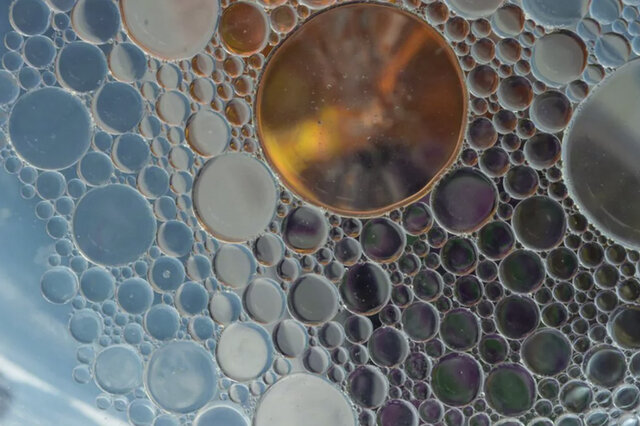
The application area lends itself particularly well to the use of AI. Active today in this area is the US company Potion AI (6). The company provides AI-powered formulation tools for beauty and personal care R&D. Their offerings include Potion GPT, next generation ingredient and formula databases and AI document processing. Potion’s work could have a significant impact on the entire surfactant value chain, from raw material suppliers to end consumers. By using their GPT technology, they can help target work toward novel surfactant molecules that have optimal properties for specific applications. By using their ingredient and formula databases, they can access and analyze a vast amount of data on surfactant performance, safety, and sustainability. By using their AI document processing, they can extract and organize relevant information from patents, scientific papers, and regulatory documents. These capabilities could enable Potion AI's customers to design and optimize surfactant formulations that are more effective, eco-friendly, and cost-efficient. A particularly interesting application for this type of capability is deformulation.
Deformulation is the process of reverse engineering a product's formulation by identifying and quantifying its ingredients. Deformulation can be used for various purposes, such as quality control, competitive analysis, patent infringement, or product improvement. However, deformulation can be challenging, time-consuming, and costly, as it requires sophisticated analytical techniques, expert knowledge, and access to large databases of ingredients and formulas.
AI can potentially enhance and simplify the deformulation process by using data-driven methods to infer the composition and structure of a product from its properties and performance. For example, AI can use machine learning to learn the relationships between ingredients and their effects on the product's characteristics, such as color, texture, fragrance, stability, or efficacy. AI can also use natural language processing to extract and analyze information from various sources, such as labels, patents, literature, or online reviews, to identify the possible ingredients and their concentrations in a product.
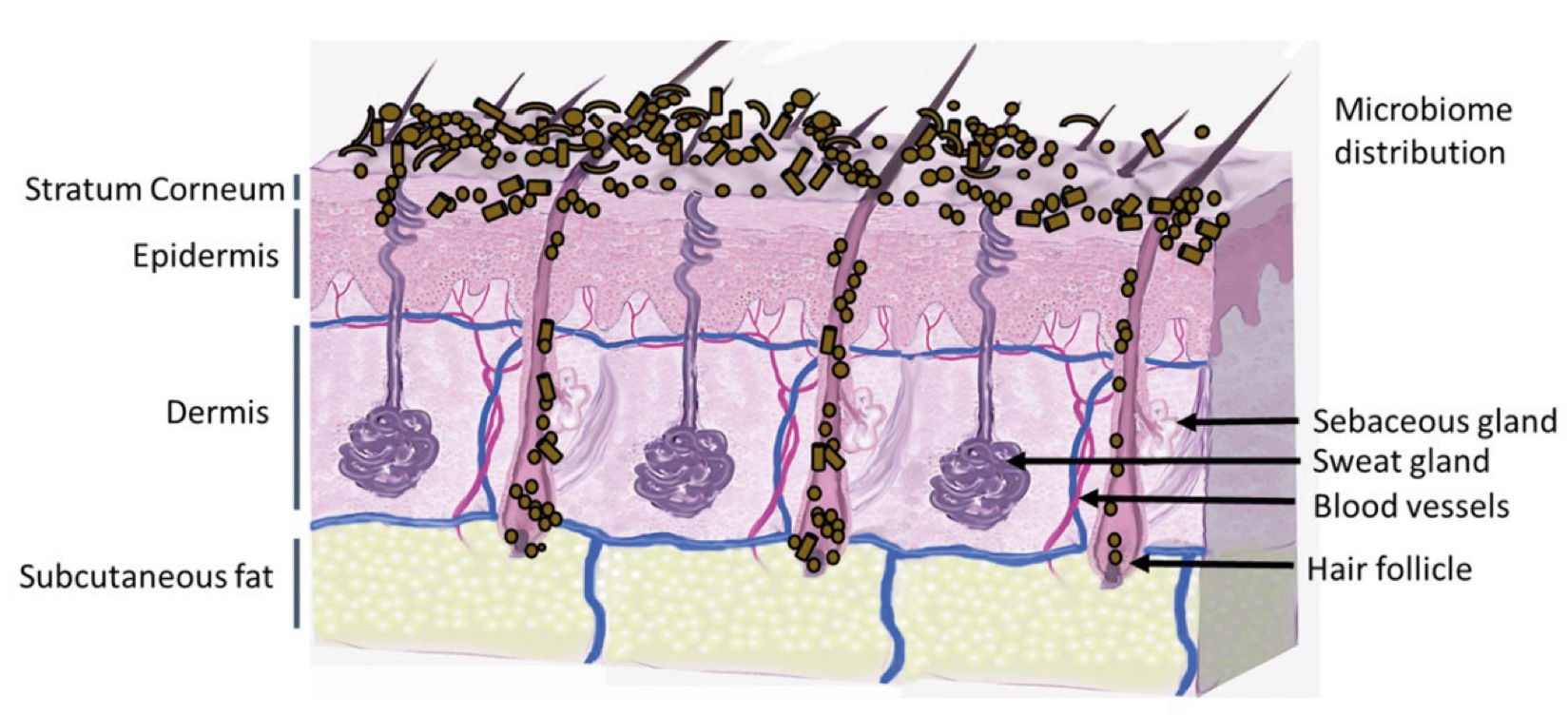
Figure 2. Skin Section with Microbiome. Most microorganisms live in the superficial layers of the stratum corneum and in the upper parts of the hair follicles. Some reside in the deeper areas of the hair follicles and are beyond the reach of ordinary disinfection procedures. There bacteria are a reservoir for recolonization after the surface bacteria are removed.
References and notes
- Fiume M, et al. Safety Assessment of Polyglyceryl Fatty Esters as Used in Cosmetics. PubMed. 2023, Aug, 42 (2) 5S-101S
- Candelilla/Jojoba/Rice Bran Polyglyceryl-3 Esters, Paula’s Choice
- Global Polyglyceryl Esters Market Overview, Market Research Future
- Fiume M, et al. Safety Assessment of Polyglyceryl Fatty Esters as Used in Cosmetics. PubMed. 2023, Aug, 42 (2) 5S-101S
- Decode your skincare ingredients, INCI Decoder
- EV boom and sustainability focus fueling ester market expansion, F&L Asia
